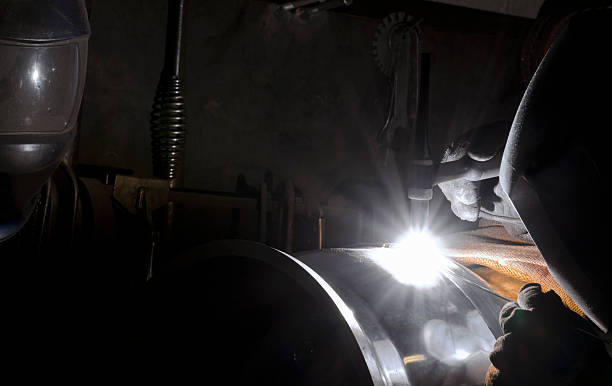Welding aluminum requires particular materials that suit its specific properties such as high thermal conductivity and susceptibility to oxidation. Here is a breakdown of the essential materials used for welding aluminum:
1. Filler Metals
Choosing the right filler metal is crucial for compatibility with the base aluminum alloy, ensuring sound welds without cracking or weakness. Common aluminum filler metals include:
- 4043 Alloy (Al-Si): Widely used due to its excellent flow characteristics and good crack resistance. It’s ideal for welding 6xxx series aluminum alloys but not recommended where subsequent anodizing is required due to the potential for a darker weld area.
- 5356 Alloy (Al-Mg): Offers greater tensile strength and better toughness than 4043. It is resistant to corrosion and suitable for welding 5xxx series alloys. It also matches the color of the base metal better after anodizing.
- 5183, 5556 (Al-Mg): Used for higher strength welds compared to 5356. They provide good resistance to corrosion in marine environments.
- 5554, 5654 (Al-Mg): Variants with specific properties for environments prone to stress-corrosion.
- 4047 Alloy (Al-Si): Contains more silicon, reducing melting point and increasing fluidity of the weld pool, often used for applications requiring good flow into the joint.

2. Shielding Gases
Proper selection of shielding gas is crucial to protect the weld area from atmospheric contamination and to stabilize the arc. Common gases include:
- Argon: The most commonly used shielding gas for aluminum welding because it helps produce a stable arc and reduces cleaning action, which is desirable when welding aluminum.
- Helium or Helium-Argon Mixtures: These are used to increase penetration and weld pool fluidity, especially beneficial in thicker sections. Helium helps produce a hotter arc, which can be advantageous due to aluminum’s high heat conductivity.
3. Welding Process Specific Materials
Depending on the welding technique, other materials might also be necessary:
- TIG Welding:
- Electrodes: Typically, pure tungsten or zirconiated tungsten electrodes are used for AC TIG welding of aluminum.
- AC Welding Machines: Alternating current is essential as it helps break up the oxide layer that forms on aluminum surfaces.
- MIG Welding:
- Welding Wire: Wires such as ER4043 or ER5356 are typically used on spools and fed through the welding gun.
- Spool Guns or Push-Pull Guns: These are crucial to prevent wire feeding problems due to the softness of aluminum wires.
4. Surface Preparation Materials
Aluminum surfaces must be thoroughly cleaned before welding to remove the oxide layer and any contaminants:
- Brushes (Stainless Steel): Used to scrub the surface. It’s important to use brushes that are only used on aluminum to avoid contamination.
- Chemical Cleaners: Alkaline or acid-based solutions can be used to remove heavy oxides and oils but must be thoroughly rinsed off to avoid introducing contaminants into the weld.
5. Safety Equipment
Given the brightness of the arc and the fine nature of aluminum welding fumes, appropriate safety gear is crucial:
- Auto-darkening Welding Helmet: Protects eyes from the intense UV light.
- Respirators: Especially when welding in confined spaces, to protect against inhaling harmful fumes.
- Protective Clothing: To shield from sparks and UV exposure.
Using these specific materials correctly can greatly improve the quality of aluminum welds and ensure the structural integrity and longevity of the welded joints.
